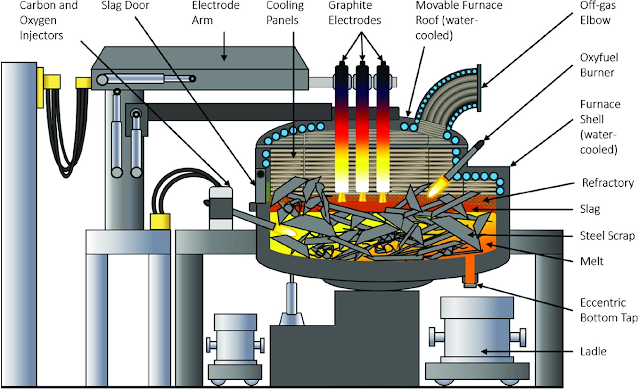The Importance of Refining Steel Castings Outside the Furnace
The control of non-metallic inclusions puts forward the requirement of "clean steel".
In the general steelmaking method, in order to remove the gas and inclusions in the molten steel, the molten steel formed by the decarburization reaction is used to boil, so the molten steel needs to be strongly oxidized.
In the next step, in order to remove a large amount of residual oxygen in the molten steel, it is necessary to deoxidize the molten steel, so a large number of inclusions are produced again, which is a contradiction that is difficult to solve in the general steelmaking method.
1. The refining method outside the furnace is adopted, and the refining process is realized by the action of vacuum and inert gas bubbles, thereby exempting the process requirement of using a deoxidizer for deoxidation.
This fundamentally reformed the steelmaking process, and the purity of the molten steel was greatly improved.
Therefore, the mechanical properties of steel, especially the toughness, are greatly improved.
2. Reduce the smelting loss of alloying elements. In the steelmaking process combining electric arc furnaces and out-of-furnace refining, alloying elements are generally added to the process of out-of-furnace refining.
Under the action of vacuum or inert gas, the melting loss of alloying elements is very slight, so the absorption rate of alloying elements is extremely high, and it is also convenient to accurately control the chemical composition of the steel.
3. Open up a way for smelting ultra-low carbon steel Under normal steelmaking conditions, it is difficult to reduce the carbon content of the steel to a very low level. This is due to the presence of carbon-oxygen balance in molten steel. If the carbon content of the steel is to be very low, the oxygen content in the steel must be high. For this reason, the burden of deoxidation in the reduction period will be increased, and the quality of steel will deteriorate.
Adopting out-of-furnace refining technology, relying on the effect of vacuum and inert gas, can reduce carbon content without increasing oxygen. Therefore, the smelting problems of low-carbon (w(C) <0.06%) and ultra-low-carbon (w(C) <0.03%) steels are fundamentally solved.
Free send inquiries to stella@hanrm.com or inquiry99@hanmetallurgy.com if any needs.
Email: stella@hanrm.com Or stellarollingmill@gmail.com inquiry99@hanmetallurgy.com
Whatsapp/Wechat:+8615877652925
Website: https://www.hanmetallurgy.com/



.jpg)








没有评论:
发表评论